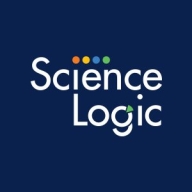

ScienceLogic and ServiceNow Discovery are both popular solutions for IT infrastructure monitoring and management. User reviews suggest ScienceLogic has an edge in pricing and support, but ServiceNow Discovery has a stronger feature set, making it worth the higher cost.
Features: ScienceLogic users highly value its comprehensive monitoring capabilities, automation, and cost-effectiveness. ServiceNow Discovery is appreciated for its robust CMDB integration, extensive discovery features, and advanced capabilities.
Room for Improvement: Users of ScienceLogic often cite complexity in configuration, setup simplicity, and deployment time as areas needing improvement. ServiceNow Discovery users mention the need for better scalability, performance optimization, and reducing configuration difficulty.
Ease of Deployment and Customer Service: ScienceLogic typically requires a longer deployment time and has mixed reviews regarding customer service. ServiceNow Discovery offers a more straightforward deployment process and receives higher marks for customer support.
Pricing and ROI: ScienceLogic is noted for being more cost-effective with a faster ROI according to user reviews. ServiceNow Discovery, while more expensive, delivers good value through advanced features and capabilities.
The return on investment is fair but often challenged by medium-sized businesses who may question its adequacy.
I received excellent support from ScienceLogic.
Problems with Skylar may require longer wait times due to limited resource expertise.
We have a lab environment to test solutions before offering them to customers, ensuring everything works correctly.
The 'follow the sun' model, where the time of raising the ticket and where it lands, plays a crucial role.
This rating is because there are features on the tool that never worked and despite calling our support, there were no results.
Small companies will not be able to afford ServiceNow Discovery from the pricing perspective.
I would rate it as a nine on a scale of one to ten, indicating it is highly scalable.
It receives this rating because it can be difficult to troubleshoot when the discovery is failing.
The stability rating is nine out of ten, acknowledging some bugs, but indicating these are minor issues.
That is not a mistake of the product. It is due to excessive security on the network.
I would rate the stability of ServiceNow Discovery as nine, as we never had downtime.
While some other companies have easier APIs, using this solution demands significant expertise.
If the knowledge for implementation could be spread through articles, it would reduce this dependency.
Integrating observability and APM monitoring into the overall portfolio would be beneficial.
ServiceNow ITOM is particularly not very strong in terms of monitoring capabilities. They do not have any monitoring tool.
A CMDB debugging tool to give indication about the errors that appear would be appreciated.
The areas of ServiceNow Discovery that have room for improvement are getting custom reports on the relationship between CIs that are not on the same table.
It could be cheaper.
ScienceLogic is not that expensive and is cost-effective overall.
I think the price of ServiceNow Discovery is cheaper than BMC.
ServiceNow is considered more expensive compared to other products.
Notably, its automation features, such as Runbook action, enable domain experts like me to execute one-click automation solutions, which contributes significantly to reducing MTTR.
It offers over 500 integrations with a wide range of device types, referred to as PowerPacks, which are prebuilt integrations for hundreds, if not thousands, of integration types.
The CMDB update and the automatic CMDB update are valuable.
The workflows are beneficial as they allow tasks to be assigned to respective teams without the need for coding.
ServiceNow Discovery helps with operations, audits, and allows people to assess how a particular change in infrastructure impacts other components.
ServiceNow Discovery has normal discovery of CIs, as well as horizontal discovery for understanding Service Mapping.
| Product | Market Share (%) |
|---|---|
| ServiceNow Discovery | 3.7% |
| ScienceLogic | 2.0% |
| Other | 94.3% |


| Company Size | Count |
|---|---|
| Small Business | 13 |
| Midsize Enterprise | 11 |
| Large Enterprise | 24 |
| Company Size | Count |
|---|---|
| Small Business | 16 |
| Midsize Enterprise | 5 |
| Large Enterprise | 23 |
ScienceLogic excels in customizable dashboards, seamless integrations, and real-time data analysis, supporting diverse IT environments with multi-tenant capabilities.
ScienceLogic provides robust infrastructure and network monitoring, catering to cloud, applications, and server environments. It supports hybrid setups, integrating with CMDB and ticketing systems while automating incident management. ScienceLogic's PowerPacks eliminate visibility gaps and its adaptable nature supports modern and legacy systems. Offering agentless monitoring, it ensures efficient operations with scalable infrastructure support and detailed reporting. However, the interface complexity and need for professional support can present usability challenges. Enhancements in reporting, application coverage, API support, and customization are desirable for improved user experience.
What are ScienceLogic's most important features?ScienceLogic is often implemented across industries requiring detailed attention to infrastructure and network monitoring. It finds utility in managing hybrid environments, integrating seamlessly with essential systems like CMDB and ticketing platforms. Its scalability and adaptability are valued in unifying complex, diverse environments under one monitoring platform.
ServiceNow Discovery finds applications and devices on your network, and then updates the CMDB with the information it finds. Discovery is available as a separate subscription from the rest of the Now Platform.
We monitor all Server Monitoring reviews to prevent fraudulent reviews and keep review quality high. We do not post reviews by company employees or direct competitors. We validate each review for authenticity via cross-reference with LinkedIn, and personal follow-up with the reviewer when necessary.